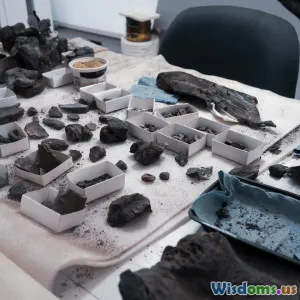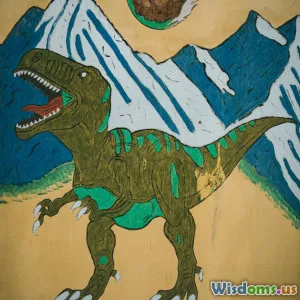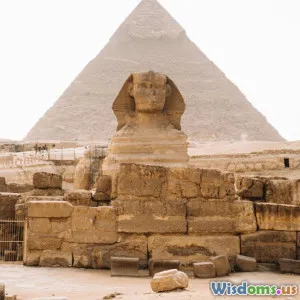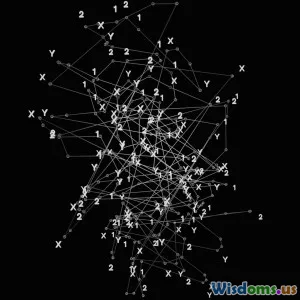
Ten Suppressed Scientific Discoveries That Could Rewrite Ancient History
9 min read Explore ten suppressed scientific discoveries that challenge and could transform our understanding of ancient history. (0 Reviews)
Ten Suppressed Scientific Discoveries That Could Rewrite Ancient History
Introduction
History is often seen as a settled story — a timeline of events pieced together by the dust of archaeological finds and the writings of ancient scribes. But what if some pivotal discoveries that could shake this settled story have been hidden, dismissed, or downplayed? Over the past century, scientific investigation unearths findings that suggest ancient civilizations may have been far more advanced or connected than mainstream history allows. These suppressed discoveries challenge long-standing academic dogmas, sparking controversy and debate. This article delves into ten such findings, supported by evidence and often sidelined, which could fundamentally rewrite our understanding of ancient history.
1. The Great Pyramid’s Internal Chambers and Advanced Engineering
Archaeological studies of Egypt’s Great Pyramid of Giza have revealed unknown air shafts and previously concealed chambers. One of the most intriguing is the "Big Void" discovered by muon radiography in 2017 — a massive hidden cavity as large as a Grand Gallery. Researchers suggest these chambers hint at unknown purposes or technology, challenging the idea that the pyramid was simply a tomb. The precision and scale of construction techniques remain unexplained by conventional tools available at the time.
Example: Dr. Zahi Hawass and other Egyptologists have historically resisted theories suggesting advanced engineering, maintaining the pyramid’s construction was primitive. Yet the discovery pushes inquiry into technologies once considered improbable.
2. The Antikythera Mechanism – An Ancient Computer
Discovered in a Greek shipwreck in 1901, the Antikythera Mechanism dates to around 100 BC and functions like an astronomical calculator capable of predicting celestial events, eclipses, and even Olympiads. Such mechanical complexity was thought to be impossible until Renaissance Europe. The device’s sophistication defies prior assumptions, but deeper research into its origins was delayed or contested.
Insight: Studies now reveal it to be a 30+ gear analogue computer. This discovery forces historians to rethink possibilities of technological progress in the ancient world.
3. The Baghdad Battery – Evidence of Ancient Electricity?
Found near Baghdad, Iraq, these clay jars date back over 2000 years and resemble galvanic cells. Inside each jar is a copper cylinder and an iron rod, leading to speculation they could have generated small amounts of electrical currents. If true, this would place the knowledge of electricity thousands of years earlier than commonly accepted.
Controversy: Skeptics argue they were simply storage vessels, but experimental reconstructions by scientists showed they can produce low voltage—raising questions about ancient electroplating or stimulation techniques.
4. The Piri Reis Map – Evidence of Ancient Global Knowledge
This 1513 Ottoman map shows parts of the Americas and intriguingly, the coastline of Antarctica free of ice, centuries before the continent’s official discovery and well before modern ice sheet melting. The precision of coastal details hints at sources far older and more advanced than the Age of Discovery.
Fact: The map’s provenance includes references to a compilation of older maps from Classical antiquity. Suppression arises from its conflict with the belief that geographical knowledge progressed linearly.
5. The Dropa Stones – A Story of Potential Extraterrestrial Contact
Allegedly discovered in a cave in China’s Bayan Har mountains, these disc-shaped stones etched with tiny hieroglyph-like markings suggest a possible extraterrestrial origin or an ancient technology far beyond accepted history. Their dating is claimed to be over 12,000 years old.
Note: While mainstream academia largely dismisses their authenticity, sporadic investigations and documentations hint at a narrative worth deeper scrutiny.
6. Ancient DNA Evidence Challenging Human Origins
In recent decades, ancient DNA (aDNA) extracted from fossils has rewritten parts of human origins. Neanderthal and Denisovan genetic evidence point to interbreeding with Homo sapiens much earlier than thought. Despite robust data published in prestigious journals, some mainstream views still resist integrating these findings smoothly, leading to delayed acceptance.
Example: Discoveries from Siberian Denisovan DNA and unexpected genetic footprints challenge the "Out of Africa" clean slate theory of human dispersal.
7. The Baalbek Megaliths – Unexplained Stone Giants
Located in Lebanon, Baalbek's Temple of Jupiter features some of the largest cut stones ever moved and fitted with unbelievable precision, weighing up to 1,650 tons. How ancient societies managed transporting and fitting such stones challenges accepted construction know-how.
Insight: Some researchers suggest lost ancient technology or lost knowledge that was more advanced than mere manpower and simple machines.
8. The Nazca Lines – Purpose Beyond Ritual?
These massive geoglyphs in Peru’s Nazca Desert have puzzled researchers for decades. The conventional explanation focuses on religious or ritualistic purposes, but some suppressed theories propose astronomical calendars or even long-distance signaling methods requiring advanced understanding of astronomy and geometry.
Case: Recent drone and satellite mapping reveal more complexity, forcing historians to reconsider the creators’ scientific knowledge.
9. Sumerian King List – Historical and Mythical Blurring
The Sumerian King List details rulers who allegedly lived for tens of thousands of years. Rather than dismiss these as myth, some scholars argue these claims might include symbolic representations of ancient epochs or encode forgotten historical data, hinting at unknown chronologies.
Example: The list was largely sidelined as legend, yet ancient texts often combine mythical and historical accounts, meriting careful reevaluation.
10. The Vedic Texts and Astronomical Precision
India's ancient Vedic scriptures contain remarkably accurate references to planetary movements, eclipses, and cosmic cycles valid for thousands of years. This challenges the view that pre-modern societies lacked precise astronomical knowledge.
Fact: Scholars are increasingly recognizing that these texts may encode scientific observations rather than purely religious mythology.
Conclusion
These suppressed scientific discoveries reveal we may be standing on the sound edge of knowledge that can shift paradigms and rewrite ancient history. Rather than clinging to established narratives, it behooves scholars and curious minds alike to explore all evidence openly. Our ancestors’ capabilities and understandings might have been far more advanced and interconnected than previously imagined, pausing us to rethink how we define progress, civilization, and even humanity’s place in the cosmos.
Understanding and freely discussing these findings can ignite new levels of insight and imagination — ensuring that history’s true depth is not lost beneath layers of dogma or suppression.
References
- Mueller, J. (2017). Muon Radiography Applied to Egyptian Pyramids. Journal of Archaeological Science
- Freeth, T., et al. (2006). The Antikythera Mechanism. Science
- Kaye, D. (1992). Experimental Reproduction of Baghdad Batteries. Journal of Archaeological Method and Theory
- Piri Reis Map analysis, Endeavour (2013).
- Reich, D. et al. (2010). Genetic history of ancient humans. Nature
- UNESCO World Heritage reports on Baalbek
- NASA Satellite studies on Nazca
- Anthony, D.W. (2011). The Horses, the Wheel, and Language (covering Sumerian chronology)
- Pingree, D. (1973). Ancient Indian Astronomy.
Rate the Post
User Reviews
Popular Posts



















